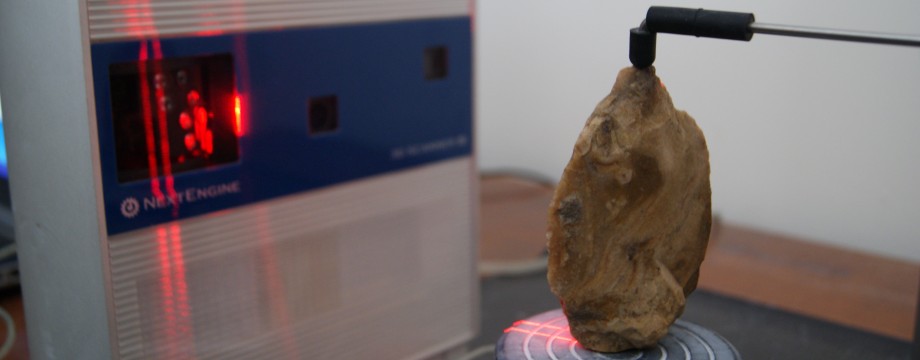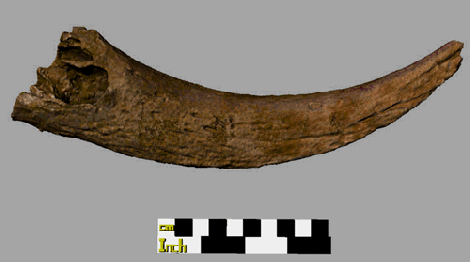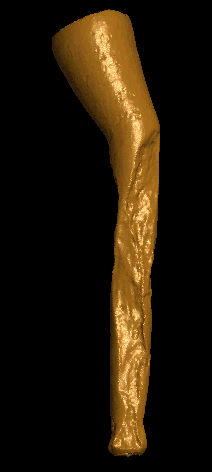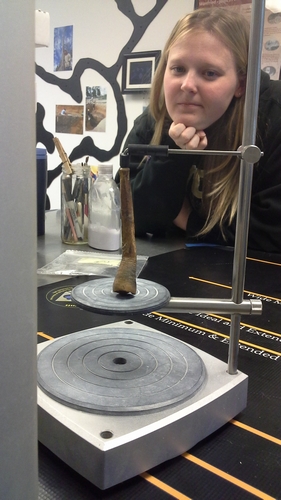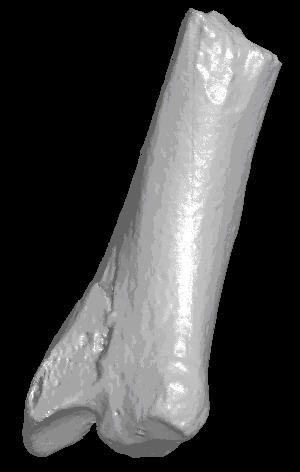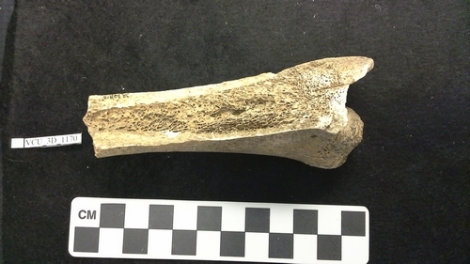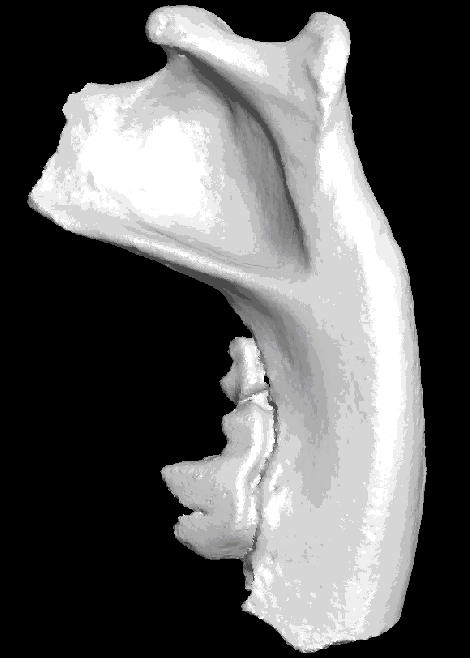by Bernard K. Means, Director of the Virtual Curation Laboratory (VCL)
Today’s animation is a goat horn recovered archaeologically by Jamestown Rediscovery. According to Merry Outlaw, Curator of Archaeology for Jamestown Rediscovery, the butchered horn is from the post structure in the palisade extension to the original James Fort. It came from a large cellar (possible well) and dates prior to 1624. More information on the excavation of this feature can be found here.
